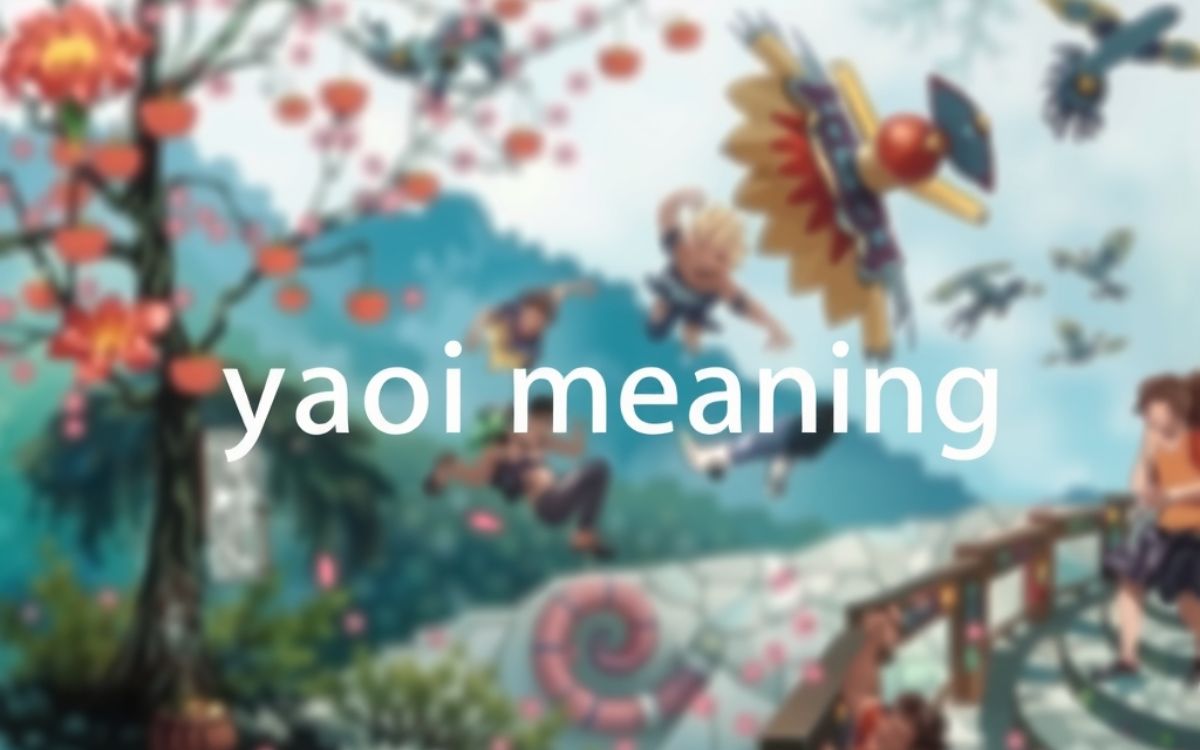If you’ve ever stumbled across the term yaoi while diving into anime or manga communities, you might have wondered what it really means. At first glance, it can seem like just another piece of internet slang, but the word actually carries a lot of cultural weight, especially in fan circles. Understanding its roots and how it’s used today helps you see why it’s more than just a genre label.
The word “yaoi” refers to a specific style of storytelling that highlights romantic or intimate relationships between male characters. While it’s often associated with manga and anime, its influence stretches far beyond—into fanfiction, art, and even global pop culture discussions. Some people enjoy it for the emotional connections portrayed, while others are drawn to the fantasy element it creates.
Over the years, yaoi has sparked both enthusiasm and debate. Fans celebrate it for its unique narratives and expressive art styles, while critics sometimes raise questions about representation and accuracy. Whether you’re new to the term or already familiar, exploring its full meaning and usage gives you a clearer picture of how yaoi continues to shape conversations in the anime and manga world.
What Does Yaoi Mean?
The term yaoi refers to a genre of manga and anime that focuses on romantic or sexual relationships between male characters. It often highlights emotional intensity, dramatic storytelling, and sometimes explicit content.
In Western fandoms, yaoi is often used interchangeably with BL (Boys’ Love). But in Japan, the distinction is more nuanced. BL tends to be the broader, more accepted term, while “yaoi” originally referred to amateur or fan-made works.
The History and Evolution of Yaoi
Yaoi began in the late 1970s in Japan, created mainly by female manga artists. It was originally seen in doujinshi (fan-made comics) before moving into mainstream publishing.
By the 1990s, yaoi crossed into Western fandoms, spreading through scanlations and online communities. Today, it’s a recognized subgenre with a global fanbase, from casual readers to dedicated collectors.
Yaoi vs. BL: What’s the Difference?
So, what is BL called in Japan? BL, or Boys’ Love, is the mainstream label used for professional works. It includes both lighthearted romances and serious, dramatic stories.
Yaoi, on the other hand, was once a niche, fan-driven category. While many fans outside Japan use “yaoi” to describe the whole genre, Japanese readers usually prefer “BL” for commercial works.
Key Terminology in Yaoi and BL Fandom
- What is a Fujoshi girl? A “fujoshi” literally means “rotten girl” in Japanese. It describes female fans who enjoy BL and yaoi stories.
- What is a Yumejoshi? A yumejoshi is a fan who imagines herself as part of the story, often in a relationship with a fictional character.
- What is an Uke? In yaoi pairings, the uke is the more passive or submissive partner, opposite the seme (dominant).
- What is Bara? Bara is manga created by and for gay men in Japan. It’s different from yaoi, which is often written by women for women.
Yaoi in Japanese Society
Is BL illegal in Japan? No, BL is not illegal. However, there are censorship rules depending on the explicitness of the content. Despite that, it remains popular and widely consumed in Japan.
Yaoi and BL are deeply tied to manga culture. Many works start as doujinshi before gaining popularity and being published commercially.
Related Subcultures and Terms You Might Hear
- What is a Gachikoi? A gachikoi is a fan who has an intense, sometimes romantic, devotion to an idol or fictional character.
- What is Proship? Proship refers to fans who defend exploring all types of fictional relationships, even controversial ones, as valid creative expression.
- What is Fictosexual? A fictosexual person is someone who feels attraction to fictional characters rather than real people.
These terms overlap with yaoi fandoms, showing how diverse and layered the community really is.
Comparison With Other Genres
What is a Josei? Josei is manga aimed at adult women. It focuses on realistic romance, life struggles, and mature themes.
Unlike josei, yaoi emphasizes male–male relationships, often with more dramatic or stylized storytelling. That’s why yaoi has a wide appeal outside its original audience.
Why People Enjoy Yaoi
For many fans, yaoi offers emotional storytelling and freedom from typical romance tropes. The characters explore relationships in ways that feel fresh and unique compared to mainstream manga.
Fans also love the creativity in the community. From fanart and fanfiction to conventions, yaoi culture thrives on expression and imagination.
Criticism and Debates Around Yaoi
Not everyone views yaoi positively. Some critics argue it misrepresents LGBTQ+ relationships. Others say it fetishizes gay men rather than representing them realistically.
At the same time, many creators and fans see yaoi as fantasy storytelling—not meant to mirror real life. This ongoing debate keeps the genre under discussion within both fan and academic circles.
Conclusion
In the end, the meaning of yaoi goes beyond a simple definition. It represents a vibrant genre that blends creativity, fantasy, and emotion while connecting fans across cultures. From its origins in Japanese doujinshi to its global recognition today, yaoi has become a lasting part of anime and manga culture.
At the same time, yaoi continues to spark conversations—both celebratory and critical. Whether you’re exploring it for entertainment, curiosity, or deeper cultural interest, understanding its roots and usage helps you see why it resonates with so many. It’s more than just stories on a page; it’s a community, an art form, and a cultural phenomenon.
FAQs
What is BL called in Japan?
BL in Japan is called “Boys’ Love”, a genre of manga and anime focusing on romantic or sexual relationships between male characters.
What is a Fujoshi girl?
A fujoshi girl is a female fan who enjoys Boys’ Love or yaoi stories, often imagining and celebrating romantic pairings between male characters.
Is BL illegal in Japan?
No, BL is not illegal in Japan. However, some works face censorship depending on explicit content, but the genre itself is widely accepted.
What is a Josei?
Josei is a manga genre aimed at adult women, focusing on realistic relationships, mature storytelling, and everyday struggles rather than fantasy-driven plots.
What is a Yumejoshi?
A yumejoshi is a fan who imagines themselves in the story, often as the love interest of a fictional character they admire.
What is a Uke?
In yaoi or BL, the uke is the more passive or submissive partner in a male–male relationship, opposite the seme (dominant).
What is Bara?
Bara is manga created by and for gay men in Japan, focusing on realistic male bodies and authentic LGBTQ+ relationships, unlike yaoi.
What is a Gachikoi?
A gachikoi is an extremely devoted fan who feels strong, sometimes romantic, affection for a fictional character, idol, or anime figure.
What is Proship?
Proship refers to fans who believe all fictional relationships, even controversial ones, should be allowed as creative freedom without judgment or restriction.
What is Fictosexual?
A fictosexual is someone who feels primary attraction toward fictional characters rather than real-life people, often within anime, manga, or gaming communities.

Welcome to Bloomnis.com! I am the admin, here to bring you the best jokes and laughter. My goal is to make your day brighter with funny content. Enjoy jokes, puns, and humor anytime. Keep smiling and have fun with us. Laughter is the best medicine!
















